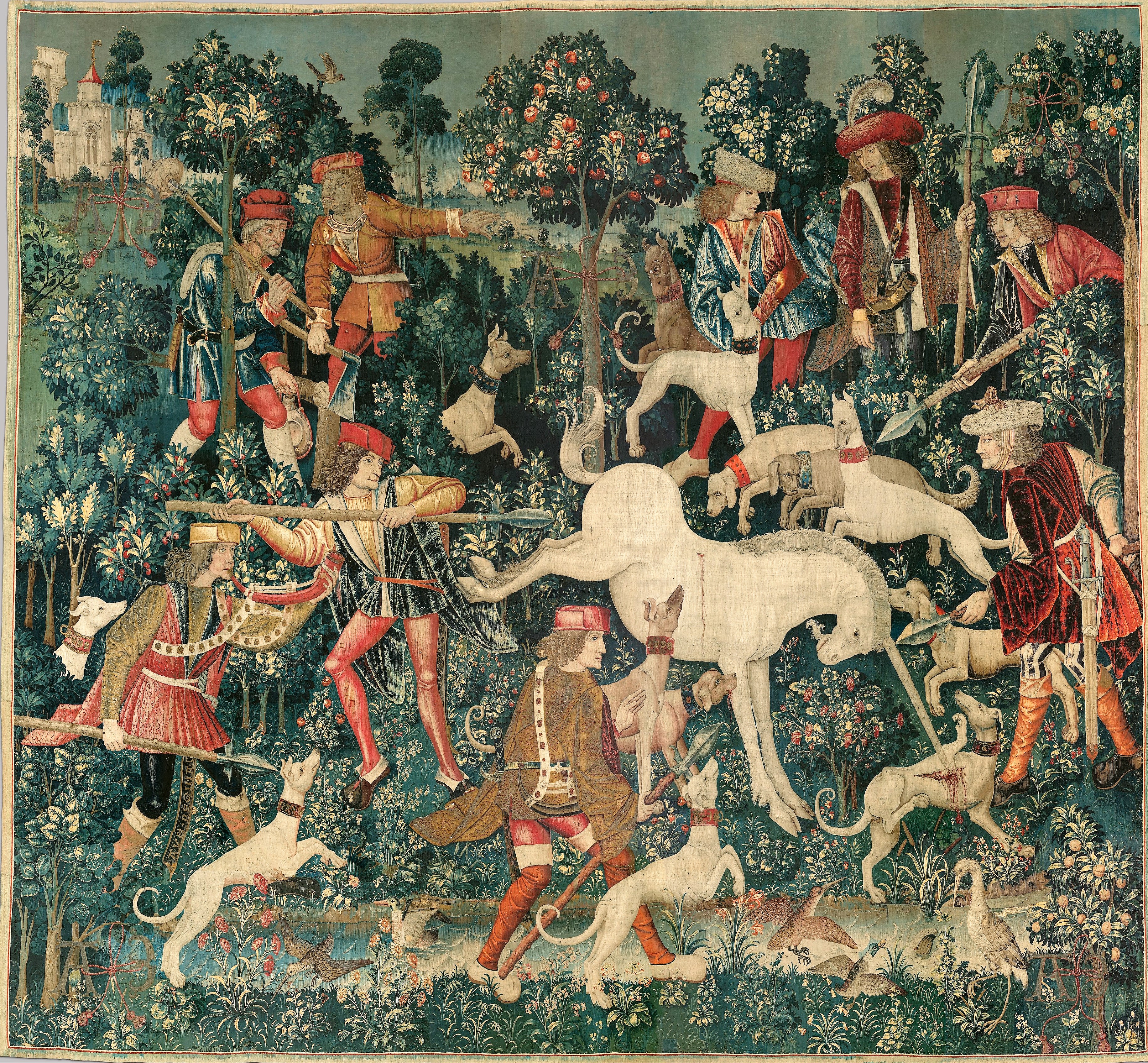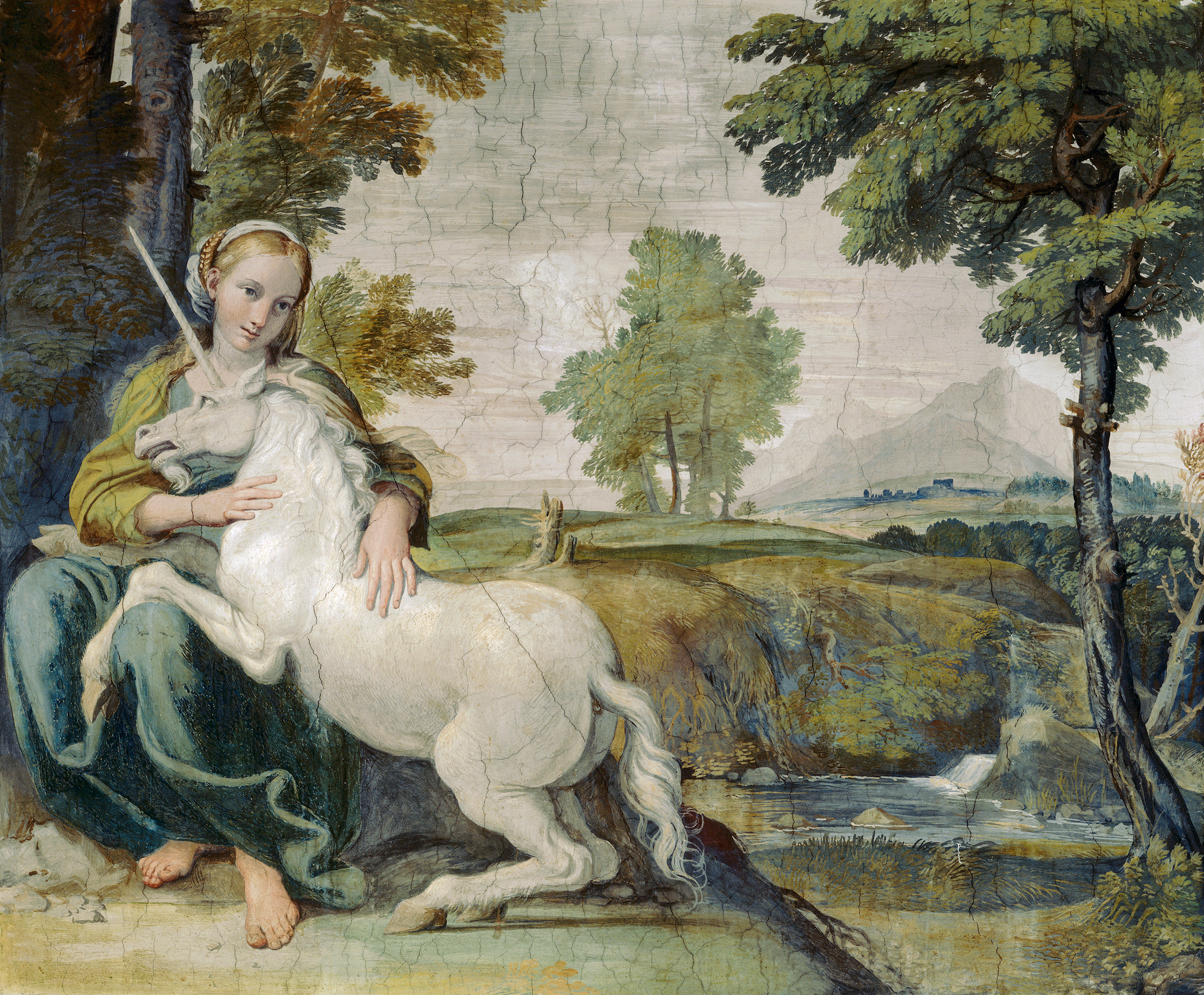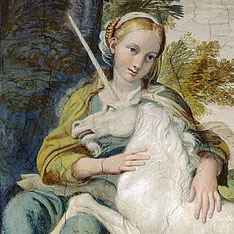What does the unicorn mean? Unicorns are everywhere, from movies and books to t-shirts and purses. More than just a fanciful image, the unicorn has a long history steeped in legend and symbolism. In this series, we’ll discover from literary expert Dr. Jane Beal exactly what the unicorn means and why.
How does the unicorn relate to Christianity?
The unicorn’s history may surprise you! The prevalence and meaning of the unicorn actually ties strongly into Christian tradition. If that sounds like a radical statement, let’s tackle the elephant in the room (that’s a pun because elephants are traditionally an enemy of unicorns – your first fact for the day!). Should Christians even be talking about fantasy creatures like unicorns? What does the unicorn historically mean to Christians? Let’s see what Dr. Beal has to say on this issue.
Q: How did you decide to research the unicorn as a symbol for Christ in literature?
What happened was, when I was a kid, I went to church, and I had a friend in church who was an older woman named Penny. And Penny started a sewing business, and she wanted to put the word “unicorn” in the title of her business, and some of the other women in church were quite—I don’t know how to put it, but they were snobby with her, and they were like, “How can you put ‘unicorn’ in the title of your business? You’re a Christian. That’s not Christian, talking about a unicorn.”
She was upset, and she went to our pastor, and she was, you know, they talked. And my pastor and Penny agreed that the word “unicorn” does occur in Scripture, and that in fact it is not anti-Christian in any sense to like unicorns or use unicorns in the title of your sewing business.
So I remember being privy to that as a child, and I was like, “I don’t understand. Why is there a big issue around unicorns?” Because of course, as a child, my parents were reading J.R.R. Tolkien to me and C.S. Lewis, and there’s a unicorn in, you know, C.S. Lewis’ Narnia.
And anyway, so it started off a curiosity, and I noticed that when I read the New International Version of the Bible, the word “unicorn” did not occur, but it does occur, I believe, in the King James Version. And so, I became interested in the problem of translation. Why does the word “unicorn” occur in some translations of the Bible and not others?
And so this eventually led me to investigating what are the words in Hebrew, Greek, Latin, and English that—well, actually Greek, Hebrew, and Latin that lead us to the word “unicorn” in English or not, depending on the translation. And then, after I had done some work on the unicorn as a symbol for Christ in the Middle Ages, I started looking at medieval bestiaries, which are books of wild creatures that are drawn from a source called the Physiologus, and essentially someone wrote about wild creatures and then created allegories for their existence and behavior that interpreted them in spiritual ways. Some of them are connected to the life of Christ. So the phoenix, the pelican, the lion, the griffin—these different animals were interpreted in relationship to Christ’s life. So that’s kind of a long answer to a short question.
Q: Tell us more about what you discovered in these allegories and these mythological creatures, as we would think of them—the unicorns and the griffins—how they ended up symbolizing Christ and what they taught about Him.

So this is interesting. There was a legend that was associated with unicorns, mainly that a unicorn is a wild creature that can be captured by or tamed by a virgin, a virgin maiden, and then hunters can come in and kill it.
Ok, so this a legend. And so, when it was allegorized, this legend, they said, ok so Christ is the unicorn. He became incarnate, and the Virgin Mary was the one who received Him. He laid His head in her lap, right, like the unicorn does in the legend. Then He was slain by His persecutors in His time, His Jewish community, His Roman oppressors, all the sinners in the world who had responsibility for Christ’s death, even us who live today, right? And so they interpreted the unicorn that way as a symbol of Christ’s incarnation and of His crucifixion.
Q: In terms of the symbolism of the unicorn, is it always symbolizing the incarnation, or are there other allegories and symbols that go with it?
Great question! So you’re really onto something there with that question. So the unicorn often represents Christ’s incarnation, but does not always represent Christ’s incarnation in different commentaries and allegorical works. Actually, sometimes the unicorn can represent death. Like you know how we have death on a pale horse, a pale rider from Revelation? Sometimes there are allegorical pictures of the unicorn bringing death to a situation, and that would be a very different allegorical reading of the unicorn than the reading of it as Christ’s incarnation.
Q: How do those two very opposite symbols—I mean allegories—end up with the same unicorn?

c. 1602 from the public domain courtesy of Wikimedia
Ok, so it’s tricky. The thing about allegory is in a way it’s a system, and you can only read certain things in terms of established tradition, but the fact is, you have to see from context which allegory applies.
So for example, if you go into church and you see the unicorn laying its head in the lap of Mary—and you know it’s Mary because she’s wearing blue and she has a gold halo—you pretty much know it’s the incarnation. If you go into a medieval secular library, and you see the unicorn and right next to it is a dancing skeleton, you know that you’re dealing with a unicorn that is representing death, not the incarnation. Context.
Q: Have you seen these symbols show up in lots of other works besides the bestiaries?
Yes. These symbols—the bestiaries are like a dictionary for reading and interpreting them. People are always like, “Well, why is there a unicorn in the church? Why is there a phoenix in the church?” A medieval church, right, in England. “Why is there a griffin? Aren’t those pagan mythological symbols? Isn’t this syncretistic? What is going on here?”
And what is going on here is, Christian thinkers read widely, and they integrated their reading with their faith, and so they interpreted these mythological creatures in terms of Christ’s life. And it created this very rich, artistic tapestry in the Middle Ages. And a lot of it was lost during the Reformation in England because of the Iconoclasts, who felt that some of these artistic images were idolatrous, so they destroyed them. But not everything was destroyed, either in England or in Europe, so if you go into old churches to this day, you will see all kinds of images of creatures, and partly they represent the natural world, partly the mythological world, and partly the spiritual world, and if you have access to the bestiary, you know, “Oh, I’m looking at a unicorn, this represents Christ’s incarnation in this church. That’s what it represents in this church.”
The unicorn represents Jesus’ incarnation and crucifixion
Now you’ve seen how literary and church tradition greatly incorporated the unicorn as a symbol for Jesus Christ. Drawing on the old legend of the unicorn, Christian thinkers of the Middle Ages made a special connection with their Savior.
But what about the unicorns we see today, and how did unicorns make it into the Bible in the first place? Join us next time as Dr. Beal explains where the word “unicorn” comes from, how it appears in Scripture, and how we find hints of its origin in popular culture today.
The True Meaning of the Unicorn Series
1. Introduction: About Dr. Jane Beal
2. What does the Unicorn Mean?
3. How did the Unicorn Change Over Time?
4. What do Other Mythological Creatures Mean?
What do you think about the unicorn as symbolizing Christ? Did this association surprise you? Share in the comments!
*This interview has been edited for the purposes of clarity and serialization.*
Please review the Posting Policy before commenting.


